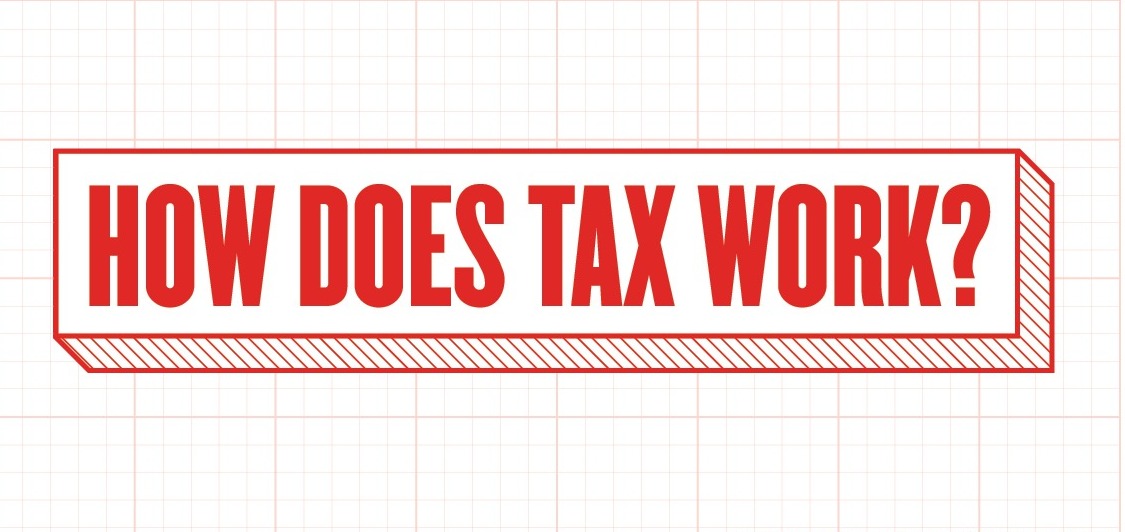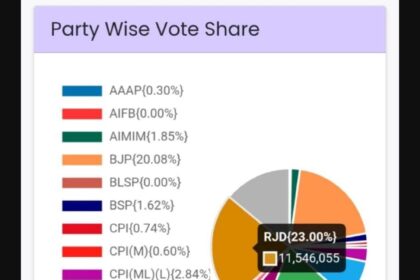What Is Tax and How Does It Work?
Mohammad Taukir Rahmani
EC Exclusive
A substantial financial foundation is essential for the effective operation of a government. Without adequate funding, a governing system becomes ineffective and cannot function optimally. While it is widely recognized that government revenue primarily depends on taxes, which can be viewed as contributions from the public, it is imperative for all citizens—regardless of economic status, whether affluent, impoverished, or below the poverty line—to participate in this collective responsibility. It is imperative for people to be aware of the governing system and the various sources of government income. However, income tax has been discussed in detail here.
Tax is a compulsory financial charge or levy imposed by a government on individuals, businesses, or other entities to fund government spending and various public services. Taxes can be direct or indirect, and they are used to support government functions like infrastructure, education, healthcare, defense, and welfare programs.
Direct taxes are imposed directly on individuals and organizations by the government. They are mandatory payments that cannot be shifted to another person or entity. Here’s how they are generated:
1. Income Tax:
Individuals and businesses earning above a certain threshold must pay a portion of their earnings as income tax.
Governments establish tax slabs or brackets, meaning higher income earners pay a higher percentage in taxes.
Income tax is collected annually, often through direct deductions (e.g., TDS – Tax Deducted at Source) from salaries or self-assessment filings.
2. Corporate Tax:
Companies and businesses are required to pay a percentage of their profits to the government.

The rate of corporate tax varies based on business size, type (domestic or multinational), and country-specific tax laws.
Governments may offer deductions or exemptions on certain expenses, research, and reinvestments to encourage business growth.
3. Capital Gains Tax:
When individuals or businesses sell assets like real estate, stocks, or bonds at a profit, they must pay a tax on the gains.
It is categorized into short-term (for assets held for a short period) and long-term (for assets held longer).
4. Wealth Tax (in some countries):
Some governments impose a tax on the total net worth of high-income individuals, including property, cash, stocks, and other assets.
5. Property Tax:
Owners of land, houses, or commercial properties must pay an annual tax based on the market value of their property.
Local municipalities typically collect this tax for infrastructure development and public services.
These direct taxes form a significant part of a government’s revenue, funding public services, infrastructure, healthcare, and defense.
Indirect taxes are those that are not directly imposed on individuals or businesses but are instead included in the price of goods and services. Unlike direct taxes, they can be shifted from one person to another, meaning the burden of tax is ultimately passed on to consumers.
Types of Indirect Taxes and How They Are Generated:
1. Goods and Services Tax (GST) / Value-Added Tax (VAT):
Applied at each stage of production and distribution of goods and services.
Businesses collect this tax from consumers and pass it on to the government.
The system ensures that tax is paid incrementally at each stage of production and distribution, which helps reduce tax evasion.
Example: When you buy a product, GST is included in the price you pay.
2. Sales Tax:
A tax imposed on the sale of goods and services. It is collected by sellers from buyers and then paid to the government.
In many countries, it has been replaced by GST/VAT.
3. Excise Duty:
Levied on specific goods like alcohol, tobacco, fuel, and luxury items.
It is imposed at the production or manufacturing stage and is later included in the retail price.
4. Customs Duty (Import/Export Tax):
Applied to goods imported into or exported out of a country. Aims to protect domestic industries and regulate international trade.
Example: If you import a foreign car, customs duty increases its price.
5. Service Tax (Now Merged into GST in Many Countries):
Previously imposed on services like hospitality, banking, telecom, and transport. Consumers indirectly paid this tax through increased service costs.
6. Entertainment Tax (Now Covered Under GST in Some Countries):
Applied to movie tickets, concerts, amusement parks, and similar events.
The cost of entertainment increases as the tax is added to ticket prices.
Key Differences Between Direct and Indirect Taxes:
Direct and indirect taxes differ in several key aspects. Direct taxes are imposed directly on individuals and businesses, meaning the tax burden cannot be transferred to others. Examples include income tax, corporate tax, and capital gains tax, which are paid directly to the government based on earnings or profits. In contrast, indirect taxes are included in the price of goods and services, allowing the burden to be passed on to consumers. These taxes, such as GST, excise duty, and customs duty, are collected by sellers and then remitted to the government. While direct taxes are based on a person’s income or financial status, indirect taxes apply to everyone regardless of earnings, ensuring a broader tax base. Indirect taxes contribute significantly to government revenue, as they ensure that tax is collected even from those who may not pay direct taxes.

Comparison of Tax Systems in Different Countries
Tax systems vary worldwide based on economic structures, governance models, and social policies. Below is a comparison of how major countries manage their tax systems, including income tax, corporate tax, VAT/GST, and other levies.
1. United States (Progressive Taxation with No National VAT)
In the United States, the tax system is progressive, with income tax rates ranging from 10% to 37%, depending on income levels. Corporate tax is set at a flat 21% following the 2017 tax reforms. However, the U.S. does not have a national Value-Added Tax (VAT), and instead, each state has its own sales tax, which can range from 0% to 10%. Additional taxes include property tax, capital gains tax, and estate tax, which contribute to the country’s revenue. A notable feature of the U.S. tax system is the division between federal and state tax authorities, which results in a complex taxation system across different states, as each state has the autonomy to set its own tax policies.
2. United Kingdom (Comprehensive Taxation with High VAT)
The United Kingdom follows a comprehensive tax system with progressive income tax rates, ranging from 20% to 45%. Corporate tax in the UK is set at 25% as of 2023. A key component of the UK’s tax revenue comes from Value-Added Tax (VAT), which has a standard rate of 20%, with reduced rates on essential items. Other taxes in the UK include national insurance contributions, capital gains tax, and inheritance tax. The reliance on VAT means that indirect taxes form a significant portion of the government’s revenue, helping to fund public services and welfare programs.
3. India (GST-Based Indirect Taxation & Slab-Based Income Tax)
India’s tax system is based on a combination of slab-based income tax and a multi-tiered Goods and Services Tax (GST). The income tax system in India imposes progressive rates, with a top rate of 30% for high-income earners. For corporate tax, the rate is 22% for domestic companies, with further reductions for new businesses. India introduced GST in 2017 as a unified indirect tax system, replacing multiple previous taxes. The GST has multiple rates: 0%, 5%, 12%, 18%, and 28%, depending on the type of goods and services. Other taxes in India include property tax, capital gains tax, and wealth tax (which was abolished in 2015). A significant feature of India’s tax system is the introduction of GST, which simplifies and unifies indirect taxation across the country.
4. Saudi Arabia (Low Taxation with High Dependence on Oil Revenue)
Saudi Arabia’s taxation system is characterized by low personal taxes, as there is no income tax for residents. Corporate tax is levied at 20%, though oil companies face higher rates. In 2018, Saudi Arabia introduced VAT, initially set at 5%, but it was increased to 15% in 2020 as part of efforts to diversify the country’s income sources beyond oil. In addition to VAT, Saudi Arabia imposes Zakat, an Islamic tax applied to certain businesses and individuals. The reliance on oil revenues has traditionally been the backbone of Saudi Arabia’s economy, but with the introduction of VAT, the country aims to reduce its dependency on oil while boosting non-oil tax revenues.
5. China (State-Controlled Taxation with High Corporate Taxation)
China operates a state-controlled taxation system with a strong emphasis on corporate taxation. The income tax system in China is progressive, with rates ranging from 3% to 45%. The corporate tax rate is set at 25%, although smaller businesses may benefit from lower rates. China also implements a VAT, with a standard rate of 13%, along with reduced rates for specific industries. Other taxes in China include social security contributions and property tax (though property tax is not applied nationwide). The Chinese government plays a significant role in regulating taxation policies to maintain economic growth and manage social welfare, ensuring control over both economic activities and wealth distribution.
6. Germany (High Taxation with Strong Welfare Benefits)
Germany’s tax system is characterized by high taxes, which fund its extensive public welfare programs. Income tax is progressive, reaching up to 45%, while corporate tax consists of a 15% federal rate plus a 5.5% solidarity surcharge. Germany has a standard VAT rate of 19%, with reduced rates of 7% applied to certain goods and services. Other taxes include trade tax, church tax, and contributions to the pension system. A key feature of Germany’s taxation system is its high-tax, high-benefit structure, which supports public welfare programs, including free healthcare and education, ensuring a strong social safety net for its citizens.
VAT and GST are similar indirect taxes but differ in structure and application:
Value-Added Tax (VAT) and Goods and Services Tax (GST) are both indirect taxes applied to goods and services at multiple stages of production and distribution. However, they differ in structure and implementation. VAT is levied at each stage of production, and businesses pay tax on their purchases while claiming refunds on sales, which can sometimes lead to tax cascading if not managed properly. In contrast, GST is designed to be more seamless, allowing businesses to claim input tax credits, thereby reducing the overall tax burden and preventing double taxation. VAT is widely used in countries like the UK, China, and Germany, whereas GST is implemented in India, Canada, and Australia as a more unified and streamlined tax system. While both taxes aim to generate government revenue, GST is generally considered more efficient in reducing tax complexity and enhancing compliance.

Taxes are the foundation of a nation’s economy, ensuring the smooth operation of government services, infrastructure, and welfare programs. By understanding the different types of taxation—direct and indirect—individuals and businesses can appreciate their role in national development. Direct taxes, such as income and corporate tax, are levied on earnings and borne by the taxpayer, whereas indirect taxes, like GST and VAT, are included in the price of goods and services, ensuring a wider revenue base.
Tax systems across the world reflect different economic models and priorities. While the United States employs a progressive income tax system, the United Kingdom and India emphasize indirect taxation through VAT and GST. Saudi Arabia, traditionally reliant on oil revenue, has introduced VAT to diversify its income sources, while Germany exemplifies a high-tax, high-benefit model with strong social welfare programs.
A well-structured taxation system not only funds government operations but also promotes economic stability, ensures equitable wealth distribution, and supports social welfare. As tax policies evolve to meet modern economic challenges, governments must strike a balance between tax efficiency, compliance, and sustainable growth. A clear understanding of taxation enables individuals and businesses to fulfill their civic responsibilities, support national progress, and advocate for a fairer economic system.















This is such an informative article! I love how you’ve included real-life examples to help explain some of the more complex ideas. It’s a really helpful read.
Your article provides a comprehensive overview that is hard to find elsewhere. You’ve tackled all aspects of the topic, and I think it will be useful for many.